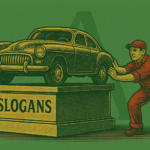If you’re a story writer or literature buff, you’ve probably come across the term “character archetype.” In literature, character archetypes are used in both classical and contemporary works to make story-lines more compelling. According to Psychotherapist Carl Jung, archetypes are primitive mental images that innately persist in our subconscious from early human experiences.
Table of Contents
What are Character Archetypes?
In short, character archetypes are designed to push the storyline forward. These characters possess stereotypical characteristics which cause them to allude an aura of predictability. Jung’s archetypes include 12 compelling characters that possess distinct traits. Below is a list of jungian archetypes you should know about:
1. The Hero
The hero is possibly one of the most popularly used archetypal characters by writers and novelists today. Though traditionally male, female heroes can also be found in contemporary literature. The most popular example includes Katniss Everdeen from The Hunger Games trilogy. The hero often possess good moral character which may be challenged throughout the storyline. As heroes, these characters are often responsible for saving the day or bringing peace in their fictional world.
2. The Innocent
Blissfully ignorant and carefree, the innocent is oblivious to all the hardships in the world. This character archetype always strives to do what’s right, no matter how difficult it may be. Fiercely loyal and wildly optimistic, the innocent is often portrayed as a dreamer. Alice from Alice In Wonderland is the perfect example of this character archetype. Luna from the Harry Potter series is also good example, though she acts as a supporting character.
3. The Rebel
For this character archetype, rules are meant to be broken. Destined for trouble, these characters aren’t destined for conformity and would rather die than lose their freedom. Katniss Everdeen proves to be the perfect blend of a hero and rebel. With a thirst to do what’s right, the girl on fire refuses to play by the rules and continues to stand her ground throughout the trilogy series.
4. The Caregiver
Often warm and nurturing, the caregiver possesses motherly traits that distinguish him or her from other characters. At times, this character may function as a supporter who selflessly cares for everybody, especially the protagonist. Compassion, protectiveness and generosity are some of the main qualities of a caregiver. They are typically happiest when they’re able to make a difference in somebody else’s life. Atticus Finch is the perfect depiction of this Jungian archetypes in To Kill A Mockingbird.
5. The Explorer
The character archetype is always on a quest for adventure. Often on the path towards self-discovery, the explorer does everything they can to maintain their originality. Far from rules and conventions, this character is often too independent for their own good which might cause them to end up in trouble. A classic example of this character archetype is Anne Shirley from Anne of Green Gables.
6. The Lover
Driven by romance, this character archetype focuses on finding fulfillment through intimacy. The lover’s main objective is to bond with the protagonist – whether it’s as a friend or their one true love. To create interest, most authors create an immediate conflict that separates the lover from his or her love interest. Shakespeare’s Romeo and Juliet is a classic example of this archetype though the story ironically ends in tragedy.
7. The Villain
Every hero needs a villain to create chaos in the city. Villains are depicted as cruel and evil, though most of them have a compelling background story that explains their behaviour. These characters often have no other motive than to gain power. Lord Voldemort from the Harry Potter series is the perfect example for this archetype. In this case, the villain is hungry for power and does everything he can to create obstacles for the hero and the people who support him.
8. The Orphan
Interestingly, a motherless child makes a powerful protagonist. Without parents, the child is expected to navigate life on their own. Such characters are often hungry for adventure and are empathic to those around them. Most orphan characters end up receiving guidance from a sage or a mentor. Pip from Great Expectations is one of the most prominent examples of this character archetype.
9. The Jester
Everybody enjoys a good laugh and that’s exactly what a Jester’s for. With an aim to provide comic relief, this character may seem foolish on the outside, only to exhibit sheer wisdom as the storyline progresses. Quite often, this character may have a hard time understanding social conventions and are belittled by others because of their goofy antics. Jesters can be a hero’s best friend or a source of annoyance to diffuse the tension. An example of this archetypal character includes Nick Bottom from A Midsummer Night’s Dream.
10. The Mentor
Typically old and wise, mentors offer a breadth of knowledge that guides the hero along the way. At times, mentors may directly intervene extreme situations to protect the protagonist or other characters from danger. Most mentors end up dying towards the end of the story with their death having a significant impact on the hero. Gandalf from The Lord of the Rings is certainly one of the most loved mentors in literature. With his magical powers and wealth of knowledge, he is able to win the trust of practically everybody he comes across.
11. The Everyman
While this archetype possesses all the characteristics of a normal person, he or she is often made to overcome extraordinary challenges. This character can be a sidekick or even play the role of a protagonist. Unlike the hero of the story, this character archetype possesses no moral obligation to do what’s right. Dr. John Watson – sidekick to everybody’s favourite Sherlock Holmes is the epitome of this character archetype. Though not the smartest of them all, Watson offers companionship to Holmes, helping him connect the dots.\
12. The Creator
Wildly imaginative with a unique skillset, this character archetype is all about finding themselves. Driven by their passions, they’ll do whatever it takes to feed their soul with art, music, literature or poetry. They are often viewed as perfectionists who cannot settle for anything less than what they want. Destined to pursue her dreams, Jo March in Little Women is the perfect example of this archetypal character.
So there you have it. Include these powerful character archetypes to enhance your story writing. Good luck!
Last modified: July 8, 2025




